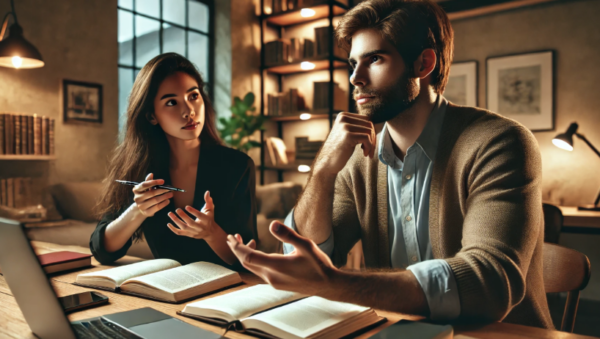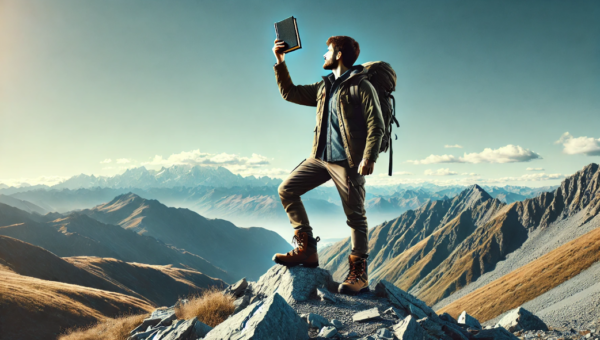In the rapidly evolving world of book publishing, self-publishing has emerged as a game-changer, empowering independent authors to take control of their publishing journey. This democratization of publishing has been driven by advancements in technology and expanded internet access, enabling writers to publish their work with minimal barriers. In recent years, more authors have chosen to bypass traditional publishing routes, drawn by the promise of higher royalties, faster time-to-market, and complete creative control over their content.
The growth of self-publishing is evident in the wide range of platforms now available to independent authors. These platforms provide services that span from basic eBook formatting and distribution to comprehensive packages including marketing, cover design, and editorial support. Choosing the right platform can significantly influence an author’s ability to reach their target audience, manage their rights, and achieve success in the marketplace.
Selecting the best publishing platform goes beyond personal preference—it’s a strategic decision that impacts visibility, revenue, and audience engagement. Each platform has unique strengths tailored to specific content types and author goals. For example, some platforms offer excellent tools for genre fiction writers to engage with their readers, while others provide robust analytics to help non-fiction authors optimize their sales strategies.
Understanding the nuances of each free publishing site for independent authors is essential. It not only helps authors maximize their reach and profitability but also protects their rights and preserves the integrity of their creative vision. This comparative review will break down the top platforms, offering insights to help authors make informed decisions that align with their publishing goals and long-term career aspirations.
Learn more about the self-publishing process and how it empowers independent authors.
Understanding Publisher Royalties in Free Self-Publishing
In the rapidly evolving world of book publishing, the rise of self-publishing has marked a significant shift, empowering independent authors to take control of their publishing journey. This democratization of publishing has been fueled by advances in technology and the expansion of internet access, enabling writers to publish their work with minimal barriers. In recent years, an increasing number of authors have opted to bypass traditional publishing routes, drawn by the allure of higher royalties, faster time-to-market, and complete creative control over their content.
One crucial aspect that self-publishing authors must consider is how royalties are structured across different platforms. Unlike traditional publishing, where royalty rates and contracts can be complex and often less favorable to the author, self-publishing typically offers higher royalty rates and more transparency. Understanding how to manage royalties as a self-published author is essential for maximizing your earnings and maintaining control over your work.
In traditional publishing, royalties are often lower, and the publisher takes a significant portion of the revenue. In contrast, self-publishing platforms like Amazon Kindle Direct Publishing (KDP) and Draft2Digital allow authors to retain a larger share of their earnings, often up to 70% of the sale price. However, each platform has its own policies and structures, which can impact your overall profitability.
The growth in self-publishing can be seen in the proliferation of platforms available to independent authors. These platforms offer various services, from basic eBook formatting and distribution to comprehensive packages including marketing, cover design, and editorial support. The choice of platform can significantly impact an author’s ability to reach their target audience, manage their rights, and ultimately, their success in the market.
Criteria for Comparing Free Publishing Sites for Authors
When evaluating free self-publishing services and sites for independent authors, several critical factors come into play. These criteria help determine which self-publishing platform might best suit an author’s needs and contribute to their overall success and satisfaction. Explore our comprehensive guide to self-publishing platforms to dive deeper into these comparisons.
Ease of Use:
The user experience is paramount in any digital service. For authors, the complexity or simplicity of uploading a manuscript, formatting the digital content, and managing their publications can greatly influence their choice of platform. A user-friendly interface, straightforward navigation, and clear instructions are essential components that make a platform appealing, especially to those who may not be technically inclined.
Visibility and Reach:
The extent to which a platform can expose an author’s work to a broad audience is vital. This includes the platform’s market penetration, its active readership, and its distribution capabilities across various regions and devices. Platforms that offer robust marketing tools, such as SEO features, social media integration, and promotional partnerships, are also highly valued for enhancing visibility.
Monetization Potential:
Authors choose to publish not just to be read, but also to earn income from their writing. Platform monetization models vary widely, from direct sales and subscriptions to ad revenue sharing and royalty schemes. Understanding the potential return on investment each platform offers will guide authors in their selection process.
Author Rights and Control:
Retaining control over one’s work is crucial for many authors. Platforms differ in the rights they require authors to forfeit and the control they retain over pricing, revisions, and publishing rights. Authors must consider how these factors align with their long-term career goals and intellectual property strategies.
Community and Support:
The availability of support services, including technical help, author forums, and responsive customer service, can significantly enhance an author’s publishing experience. Additionally, a vibrant community of fellow writers and readers can provide networking opportunities, feedback, and moral support, which are invaluable for both novice and experienced authors.
These criteria form the foundation of our comparative review, ensuring a comprehensive analysis that highlights the strengths and weaknesses of each publishing platform from a holistic perspective.
Platform 1: Amazon Kindle Direct Publishing (KDP)
Brief Description: Amazon Kindle Direct Publishing offers independent authors and publishers the ability to self-publish both eBooks and paperbacks for free, directly reaching a vast global audience through Amazon’s extensive network.
Pros and Cons:
Pros: High visibility, access to Amazon’s massive customer base, promotional tools like Kindle Countdown Deals, and the ability to earn up to 70% royalty on sales in numerous countries.
Cons: Limited formatting options, high competition, and mandatory exclusivity for enrolled titles in KDP Select.
Specific Features for Authors: Kindle Direct Publishing provides a KDP Select program that offers additional promotional opportunities and inclusion in Kindle Unlimited, from which authors can earn based on page reads.
Platform 2: Smashwords
Brief Description: Smashwords is a global eBook distributor that caters to indie authors and small publishers, offering exclusive distribution to all major retailers and thousands of libraries.
Pros and Cons:
Pros: Broad distribution network, including major eBook retailers and libraries; authors maintain full rights to their works.
Cons: Lower visibility compared to platforms like Amazon; the site’s interface could be more modern and user-friendly.
Specific Features for Authors: Smashwords offers a “Meatgrinder” ebook conversion tool for formatting eBooks, detailed sales reporting, and marketing tools such as coupon generation for promotions.
Platform 3: Draft2Digital
Brief Description: Draft2Digital offers a straightforward approach to publishing and distributing eBooks, without the need for exclusivity, giving authors flexibility in managing their digital rights.
Pros and Cons:
Pros: Easy-to-use interface, extensive distribution options, including major online retailers and libraries, and no upfront costs.
Cons: It does not provide as strong marketing tools as some other platforms, with slightly lower royalties compared to direct publishing routes.
Specific Features for Authors: Draft2Digital features automatic layout and formatting for books, a universal book link service called Books2Read, and customizable author pages.
Platform 4: Wattpad
Brief Description: Wattpad is a social storytelling platform that allows writers to publish directly and interact directly with a global community of readers.
Pros and Cons:
Pros: Strong community engagement, opportunities for serialization of content, and potential for discovery by literary agents and publishers.
Cons: Monetization opportunities are limited; works are typically offered for free.
Specific Features for Authors: Wattpad engages its community with interactive features like comments and votes and runs annual awards called “The Watty Awards” to recognize popular stories.
Your Publishing Journey Awaits – Start NowPlatform 5: Lulu
Brief Description: Lulu offers independent authors tools to publish print and eBooks which can then be sold through their own bookstore, the Lulu Bookstore, and other online and physical bookstores and retailers, and global distribution networks.
Pros and Cons:
Pros: Provides free access to publishing tools and a wide range of format options including hardcover, paperback, and eBooks.
Cons: Distribution outside Lulu’s own store can have lower profit margins due to higher wholesale discounts.
Specific Features for Authors: Lulu has robust print-on-demand technology and also offers authors the ability to create calendars and photo books.
Platform 6: Barnes & Noble Press
Brief Description: Barnes & Noble Press enables authors to publish eBooks and print titles for free with direct access to millions of Barnes & Noble readers.
Pros and Cons:
Pros: Direct distribution to a major bookseller, attractive print options, and promotional tools.
Cons: Limited global reach compared to platforms like Amazon.
Specific Features for Authors: Authors can participate in promotional programs such as Nook First Look and benefit from the platform’s print-on-demand services.
Platform 7: Apple Books for Authors
Brief Description: Apple Books for Authors provides a straightforward way for writers to publish their books directly to Apple Books, reaching readers on all Apple devices.
Pros and Cons:
Pros: Access to a large base of Apple users, no exclusivity requirement, and high-quality eBook presentation.
Cons: Requires use of Apple-specific software for eBook creation and publishing, which may limit accessibility for non-Apple users.
Specific Features for Authors: Integration with Apple’s ecosystem, offering analytics tools and promotional opportunities within the Apple Books app.
Platform 8: Kobo Writing Life
Brief Description: Kobo Writing Life gives authors a simple and direct way to publish eBooks worldwide via the Kobo eBookstore.
Pros and Cons:
Pros: Easy publication process, no exclusivity demands, and access to Kobo’s partnership with independent bookstores.
Cons: Smaller audience compared to Amazon; earnings potential may be lower.
Specific Features for Authors: Kobo provides promotional opportunities to self-publishing authors through its ‘Kobo Promotions Tool’, allowing authors to feature books in various discounts and deals directly on Kobo.
Comparative Analysis
The landscape of free publishing platforms offers a diverse range of options for independent authors, each with unique features and capabilities. This section provides a comparative analysis across key dimensions: ease of use, visibility and reach, monetization potential, author rights and control, and community and support. Explore our guide on the best self-publishing platforms for a deeper dive into the top options available.
Ease of Use:
Among the platforms reviewed, Draft2Digital and Amazon Kindle Direct Publishing (KDP) stand out for their user-friendly interfaces. Draft2Digital’s straightforward publication process and Amazon’s comprehensive dashboard make them highly accessible to authors, regardless of technical expertise. In contrast, Smashwords, while robust, has a steeper learning curve due to its more complex formatting requirements.
Visibility and Reach:
Amazon KDP dominates in terms of visibility and market reach, leveraging Amazon’s global presence and substantial customer base. Kobo Writing Life also offers extensive reach, particularly in international markets, through its partnership with local bookstores. Platforms like Apple Books for Authors and Barnes & Noble Press provide significant exposure but are somewhat limited geographically to primarily North American audiences.
Monetization Potential:
Amazon KDP offers the highest monetization potential due to its large audience and competitive royalty rates. Kobo Writing Life and Apple Books for Authors also present lucrative opportunities through their respective ecosystems. However, platforms like Wattpad focus more on community building and engagement, with direct monetization taking a backseat.
Author Rights and Control:
Smashwords and Draft2Digital score highly on author rights, offering complete control over pricing, rights, and no exclusivity requirements. Amazon KDP requires exclusivity for participation in its KDP Select program, which might restrict authors’ flexibility but provides additional promotional advantages.
Community and Support:
Wattpad excels in community engagement, providing authors with interactive tools to connect with readers directly. Lulu and Draft2Digital offer significant support in terms of customer service and accessibility of resources, making them favorable choices for authors who value the support and community feedback.
In summary, the choice of platform largely depends on the author’s priorities in terms of reach, monetization, control, and community engagement. Platforms like Amazon KDP and Draft2Digital offer a balance of reach and ease, while Smashwords and Wattpad cater to those prioritizing rights and community interaction.
Your Publishing Journey Awaits – Start NowCase Studies: Success Stories from Each Platform
The success of independent authors often hinges on how well they utilize the features of their chosen publishing platforms. Here are examples of self-published book authors who have effectively leveraged different platforms to achieve their publishing goals:
Amazon Kindle Direct Publishing (KDP): Mark Dawson, a well-known name in the self-publishing world, has found significant success on KDP, selling several books in his series of thriller novels. By actively engaging with Amazon’s marketing tools, such as Kindle Unlimited and Kindle Direct Marketing, Dawson maximized visibility and sales, demonstrating the effectiveness of using Amazon’s promotional tools to reach a wide audience.
Smashwords: Romance novelist Bella Andre has thrived on Smashwords, taking advantage of its extensive distribution network that spans multiple retailers. Her strategy involved using Smashwords’ multi-format publishing options to reach readers across different devices, enhancing her books’ accessibility and increasing sales.
Draft2Digital: Indie author Marie Force has effectively used Draft2Digital to distribute her titles widely across non-Amazon platforms, tapping into a broader audience. Her approach highlights the importance of diversifying distribution to capture readers outside the Amazon ecosystem.
Wattpad: Anna Todd started by writing fanfiction on Wattpad, eventually turning her works into the bestselling series “After.” Her success stemmed from serial publication and direct reader engagement, showcasing how ongoing interaction can build a devoted readership even before book completion.
Lulu: Expert historian David Gaughran leveraged Lulu for print specialty non-fiction books, utilizing Lulu’s strong print options and direct sales through its online bookstore. This approach illustrates the advantages of niche book marketing and direct distribution for specialized content.
Barnes & Noble Press: Romance writer Abbi Glines used Barnes & Noble Press to maintain control over her work while benefiting from B&N’s robust retail presence. Her strategy involved frequent releases and active participation in B&N’s promotional programs, which significantly boosted her visibility.
Apple Books for Authors: Mystery writer Adam Croft utilized Apple Books’ capabilities to target iOS users effectively, focusing on high-quality presentation and leveraging Apple’s ecosystem to enhance reader experience and retention.
Kobo Writing Life: Science fiction author Michael Sullivan utilized Kobo Writing Life to reach international markets, particularly in Canada, where Kobo holds a significant market share. By targeting Kobo’s specific user base and utilizing promotional tools offered by Kobo, Sullivan expanded his global readership.
These case studies demonstrate that success on each platform can be achieved through a combination of understanding the specific features and strengths of the platform and applying targeted strategies to engage and expand one’s reader base.
Challenges Faced by Independent Authors
Independent authors face numerous hurdles in their self-publishing journey. Understanding these challenges and how various platforms can help overcome them is crucial for any author looking to navigate the self-publishing landscape successfully.
Market Saturation: One of the most daunting challenges is the sheer volume of books being published independently, making it difficult for authors to stand out. Platforms like Amazon Kindle Direct Publishing (KDP) address this challenge by offering robust marketing tools such as Amazon Advertising and Kindle Countdown Deals, which help authors increase visibility among millions of readers. However, standing out in a crowded market also requires smart, strategic approaches. Here’s a guide to book marketing for self-published authors that provides actionable tips for success.
Limited Marketing Knowledge: Many authors are skilled writers but not marketers. Platforms such as Smashwords and Draft2Digital help bridge this gap by offering extensive distribution networks that place books in multiple retail outlets, thereby increasing the chances of discovery without needing deep marketing expertise. Additionally, Kobo Writing Life offers promotional tools tailored to specific markets, aiding authors in targeted marketing efforts.
Budget Constraints: The cost of publishing can also be prohibitive. Platforms like Lulu and Barnes & Noble Press provide print-on-demand services, which reduce the need for upfront investment in inventory, allowing authors to print books as they are ordered.
Need for Technical Assistance: The technical aspects of book formatting and distribution can be overwhelming. Draft2Digital stands out by offering automated tools for book formatting, making the setup process simpler for those less technically inclined. Similarly, Apple Books for Authors provides resources and tools specifically designed to help authors create and publish eBooks directly to Apple Books, ensuring high-quality output with minimal technical struggle.
Reader Engagement and Feedback: Engaging with readers and gaining feedback can be challenging. Wattpad excels in this area by fostering a highly interactive platform where authors can publish their work chapter by chapter, receive real-time feedback, and engage directly with their readership, which can be invaluable for new authors still fine-tuning their style or testing new genres.
Each platform offers specific features aimed at mitigating these common challenges, allowing authors to focus more on their writing and less on the complexities of the publishing process.
Future Trends in Self-Publishing
The self-publishing industry is poised for significant transformations driven by emerging technologies such as artificial intelligence (AI) and blockchain. These advancements are expected to reshape the publishing landscape, offering new opportunities and challenges for independent authors.
Artificial Intelligence:
AI is revolutionizing self-publishing in several ways. From sophisticated AI-driven editing tools that provide grammar corrections and style suggestions, to algorithms that can predict reader preferences, AI enhances the quality and marketability of self-published books. Moreover, AI-generated text is becoming more sophisticated, allowing authors to draft and refine their narratives with unprecedented speed and precision. We can anticipate AI to further personalize reader experiences, suggesting books based on intricate patterns of user behavior and even modifying narratives in real-time to suit individual tastes.
Your Publishing Journey Awaits – Start NowPublishing Platforms with Free Pilot Plans like Spines
Spines Publishing Platform offers an innovative and efficient approach to self-publishing, tailored specifically for authors seeking speed, affordability, and comprehensive support. With Spines, authors can see their manuscripts transform into published books in less than 30 days, thanks to a streamlined process that leverages advanced technology. This rapid turnaround is perfect for writers eager to reach their audience without the lengthy delays typical in traditional publishing.
Cost is a major consideration for any author, and Spines addresses this by providing budget-friendly comprehensive plans. These plans are priced significantly lower than industry standards, made possible through AI-driven efficiencies in production. This use of technology not only reduces costs but also enhances the quality and speed of service.
Moreover, Spines ensures a seamless publishing experience by assigning a personal production manager to each author. This dedicated support guarantees that authors have expert guidance at every step of the process. Additionally, Spines embraces the latest in publishing technology by offering all formats of books, including print-on-demand (POD), fully AI-generated to meet modern publishing needs efficiently and effectively. Sign up with Spines for free today!
Final Thoughts: Choosing the Right Free Publishing Platform
In this review of top free publishing brands for independent authors, we’ve examined platforms that cater to different publishing needs, each offering unique strengths. Key factors such as ease of use, visibility, monetization, author control, and community engagement play a crucial role in selecting the right platform.
Key takeaways:
- Amazon KDP offers unmatched global reach and earning potential.
- Draft2Digital & Smashwords provide broad distribution without exclusivity.
- Wattpad excels in community engagement and direct reader interaction.
The best platform depends on your publishing goals—whether prioritizing reach, creative control, or audience connection. By aligning platform features with your vision, you can maximize your book’s success while maintaining the freedom to shape your author journey.
FAQ’s – Top Free Book Publishing Companies for Independent Authors
Q1: How do I publish my own book for free?
A: Many platforms like Amazon KDP, Draft2Digital, and Wattpad allow you to publish for free. The main costs might come from optional services like editing, cover design, or marketing.
Q2: Can I publish a book with no money?
A: Yes, several self-publishing platforms enable you to publish at no upfront cost, though investing in professional editing and design can improve your book’s success.
Q3: How much do self-published authors make?
A: Earnings vary widely based on book sales, pricing, and platform royalties. Amazon KDP offers up to 70% royalties, while others may differ.
Q4: Can I copyright my book for free?
A: Copyright protection is automatically granted upon creation in many countries, but official registration may require a fee.
Q6: What is the website that pays you to write?
A: Platforms like Wattpad (with its Paid Stories program) and Medium can pay authors based on readership or engagement.
Q7: How do first-time authors get published?
A: First-time authors can start by self-publishing on platforms like Amazon KDP, Lulu, or Draft2Digital, which don’t require previous publishing experience.








